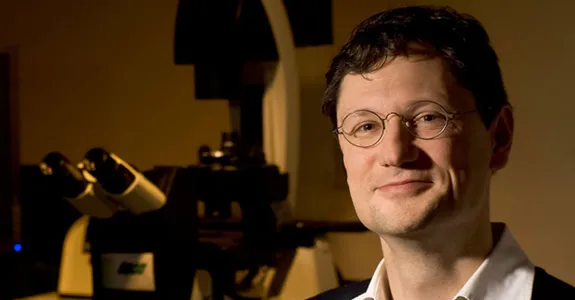How to wire a neural circuit: Initial approaches to a difficult problem


April 30, 2018 - Stanford Medicine Scope
In a JAMA opinion piece, Stanford Bio-X affiliated faculty members Gary Peltz and Tom Sudhof argue for...

April 5, 2017 - Stanford Medicine News Center
A regulatory protein blocks the expression of non-neuronal genes in nerve cells, find Bio-X...

January 19, 2017 - Stanford Medicine Scope
Bio-X affiliates Tom Südhof and Marius Wernig have established a connection that may help explain why...